Sudhagad
Sunday, September 17, 2006
Sunday, July 30, 2006
Getting ready at the base village.
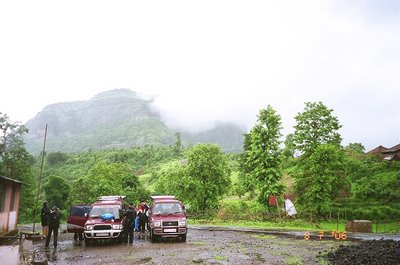 Rains started as we reached the base. Few of us had rainwear. For the rest, a large plastic sheet which we were carrying were cut and makeshift ponchos were made.
Rains started as we reached the base. Few of us had rainwear. For the rest, a large plastic sheet which we were carrying were cut and makeshift ponchos were made. Traversing the plains near the base village
Traversing the plains near the base village Warm-up climbs
Warm-up climbs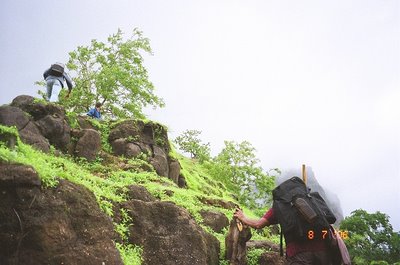 The short climb on to a small peak takes us to a ladder
The short climb on to a small peak takes us to a ladder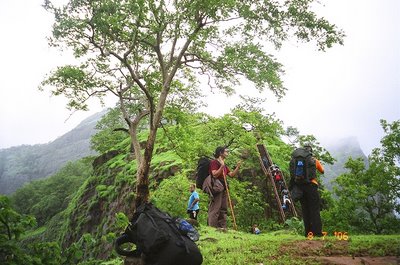
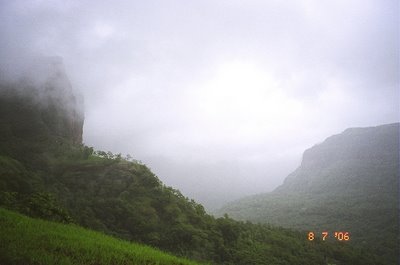 Rain lashes again as we cross the ladder, forcing everyone to get back into the rain gear. Showers were intermittent making us shift between in and out of rainwear far too often
Rain lashes again as we cross the ladder, forcing everyone to get back into the rain gear. Showers were intermittent making us shift between in and out of rainwear far too often A few kilometers ahead we come across the traces of the fort. A series of dilapidated and steep steps, between two ridges take us up
A few kilometers ahead we come across the traces of the fort. A series of dilapidated and steep steps, between two ridges take us up Deep, down below the valley is the river with its muddy gushing water. The water is muddy since it has been raining non-stop on the top
Deep, down below the valley is the river with its muddy gushing water. The water is muddy since it has been raining non-stop on the top 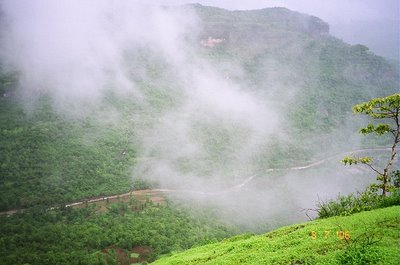
 After climbing for another 10 or 15 minutes, we stop for lunch and rest for some time
After climbing for another 10 or 15 minutes, we stop for lunch and rest for some time

 Simply amazed at the nature's beauty
Simply amazed at the nature's beauty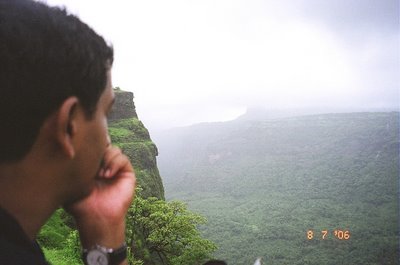 The climb continues through the misty mountain trail...
The climb continues through the misty mountain trail...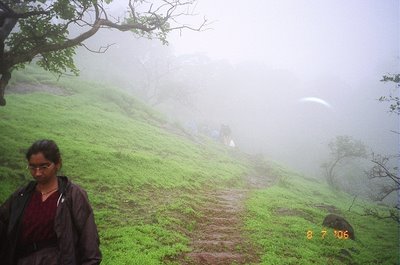
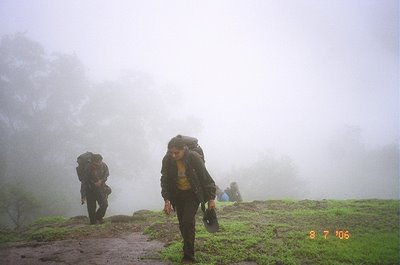 passing water falls, streams and slippery rocks
passing water falls, streams and slippery rocks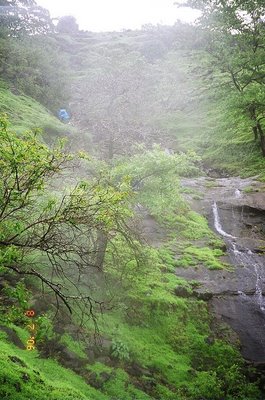
 Reaching the plateau on top. A long walk for another 10 minutes looking for an old structure and temples
Reaching the plateau on top. A long walk for another 10 minutes looking for an old structure and temples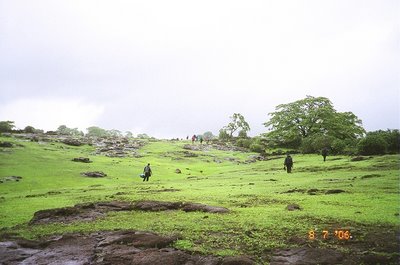 View of adjacent mountains and valleys
View of adjacent mountains and valleys
 with countless number of water falls and lush greenery
with countless number of water falls and lush greenery After some hot tea (a couple of people / tribals live on top who will cook for trekkers provided the provisions were given to them) we take a stroll in the plains and then relax, enjoying the drizzle and winds
After some hot tea (a couple of people / tribals live on top who will cook for trekkers provided the provisions were given to them) we take a stroll in the plains and then relax, enjoying the drizzle and winds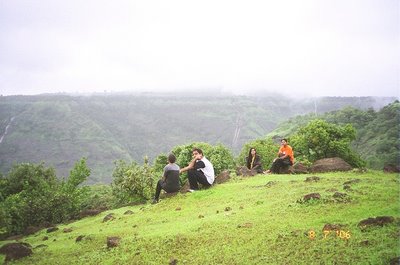
 The area near the temple is dotted with hundreds of tombs and mounements. Supposedly of many warriors and their wives who practiced 'Sati'
The area near the temple is dotted with hundreds of tombs and mounements. Supposedly of many warriors and their wives who practiced 'Sati'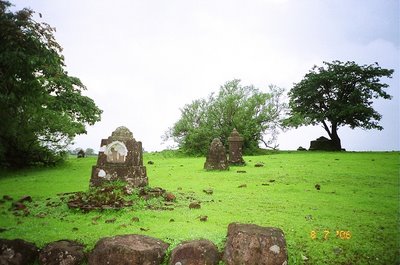
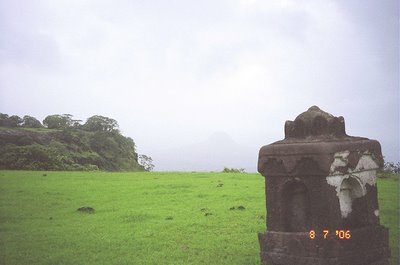
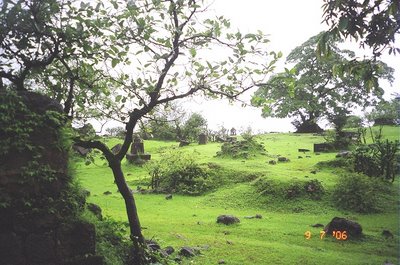
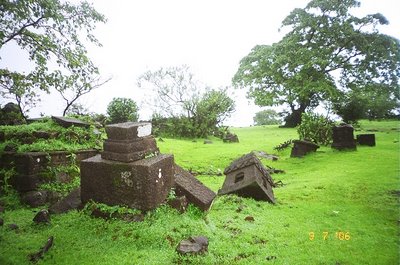 -----------------------------------------------------------------------------
-----------------------------------------------------------------------------
Day 2
Day 2 started with the exploration of the fort. It was misty and visibility was near-zero Old dilpidated structures were storage areas for either food or arms and ammunitions
Old dilpidated structures were storage areas for either food or arms and ammunitions After about 45 minutes of walk, we started descending down through one of the sides. There was a pathway, which took us to a darwaza in the middle of the forest. This was the route used to get elephants from the base to the top of the mountain
After about 45 minutes of walk, we started descending down through one of the sides. There was a pathway, which took us to a darwaza in the middle of the forest. This was the route used to get elephants from the base to the top of the mountain

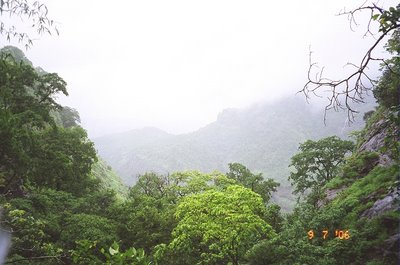 A huge entrance at the middle of the forest was a bit scary. Stone walls were constructed along the steep slopes of the mountain.
A huge entrance at the middle of the forest was a bit scary. Stone walls were constructed along the steep slopes of the mountain.
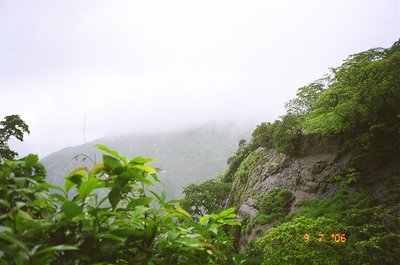 Back on top, after breakfast we set out to explore the 'Chor Darwaza', those secret exit passages in many a forts that is used by the soldiers to escape only to make a gureilla assualt later on their enemies
Back on top, after breakfast we set out to explore the 'Chor Darwaza', those secret exit passages in many a forts that is used by the soldiers to escape only to make a gureilla assualt later on their enemies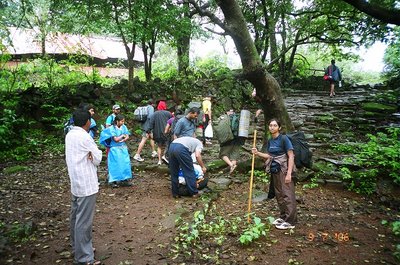
 Climbing down through narrow forest paths and slippery rocks, we again discover a stone wall.
Climbing down through narrow forest paths and slippery rocks, we again discover a stone wall. 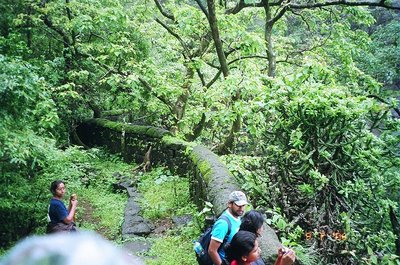 Through the sides we walk to a sudden, deep trench which takes us right through the wall
Through the sides we walk to a sudden, deep trench which takes us right through the wall A few feet below, we emerge out through the other side of the wall with a deep valley and a narrow path down
A few feet below, we emerge out through the other side of the wall with a deep valley and a narrow path down


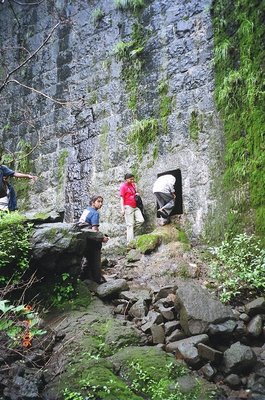 The steps, right through the wall
The steps, right through the wall Back after exploring the Chor Darwaza
Back after exploring the Chor Darwaza
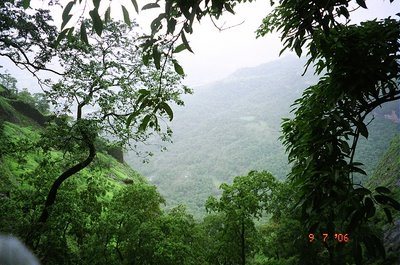
 Through the plateau on top, during our return journey. Seen far is the Taelbilla or the wall mountains
Through the plateau on top, during our return journey. Seen far is the Taelbilla or the wall mountains The return journey
The return journey
 Taking each step carefully
Taking each step carefully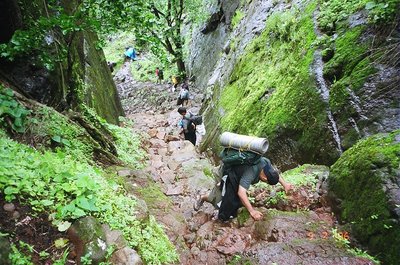 A break
A break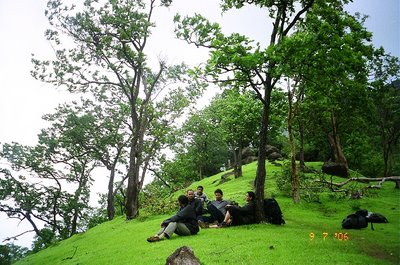
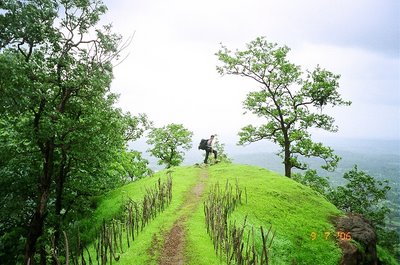

 After reaching at the base, we decided to move to the other side of the village, searching for the stream. And half-way, we loose our way
After reaching at the base, we decided to move to the other side of the village, searching for the stream. And half-way, we loose our way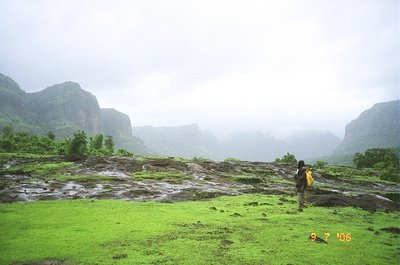
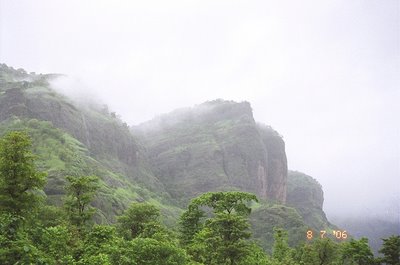 Finally, we make it to the stream and spends a couple of hours in the water
Finally, we make it to the stream and spends a couple of hours in the water

